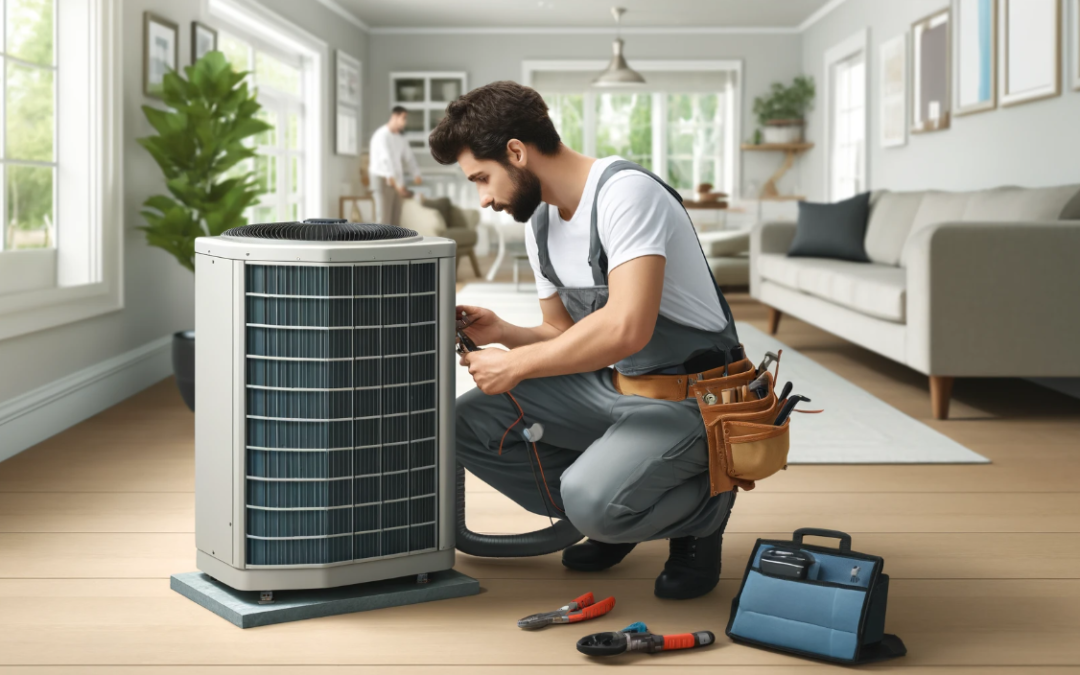Introduction
As a property manager, ensuring the comfort and satisfaction of your tenants is paramount. Installing heat pumps in your properties can provide an efficient and reliable solution for heating and cooling, enhancing tenant satisfaction while reducing energy costs. This guide will walk you through the benefits, considerations, and detailed process of heat pump installation tailored specifically for property managers.
Understanding Heat Pumps
How Heat Pumps Work
Heat pumps transfer heat from one place to another, using a small amount of energy to move heat rather than generate it. In winter, they extract heat from the outside air (even when it’s cold) and move it indoors. In summer, the process reverses, and the heat pump acts like an air conditioner, removing heat from inside your property and releasing it outside.
Benefits of Heat Pump Installation for Property Managers
Energy Efficiency
- Heat pumps are highly efficient, using less energy to provide the same level of comfort compared to traditional heating and cooling systems. This can result in significant cost savings on utility bills.
Tenant Satisfaction
- Providing a comfortable living environment year-round can enhance tenant satisfaction and retention rates. Heat pumps offer consistent heating and cooling, improving overall tenant experience.
Environmental Impact
- Heat pumps use renewable heat sources, reducing the carbon footprint of your properties and contributing to environmental conservation efforts.
Versatility and Reliability
- Heat pumps provide both heating and cooling, making them a versatile solution for all seasons. They are also known for their durability and low maintenance requirements, ensuring long-term reliability.
Pre-Installation Considerations
Property Evaluation
- Assess each property’s heating and cooling needs, insulation levels, and existing HVAC infrastructure to determine the most suitable type of heat pump.
Selecting the Right Heat Pump
- Choose between air-source, ground-source, or water-source heat pumps based on the specific needs and environmental factors of each property.
Professional Consultation
- Engage a certified HVAC technician to evaluate your properties and recommend the best heat pump systems. A professional assessment ensures the chosen system will meet your properties’ requirements.
The Installation Process
Step-by-Step Installation
1. Site Preparation
- Ensure the area for the outdoor unit is clear and level. This may involve installing a concrete pad or mounting brackets to secure the unit.
2. Installing the Indoor Unit
- Mount the indoor unit on an interior wall, typically in a central location to maximize airflow and efficiency.
3. Connecting the Units
- Install refrigerant lines to connect the indoor and outdoor units. These lines carry the refrigerant that transfers heat between the units.
4. Electrical Setup
- Ensure the heat pump is properly connected to the property’s electrical system. This should be done by a licensed electrician to ensure safety and compliance with local codes.
5. System Testing
- Once installation is complete, thoroughly test the system to ensure it is operating correctly. This includes checking refrigerant levels, thermostat settings, and overall functionality.
Maintenance Tips for Property Managers
Regular Maintenance
- Schedule bi-annual maintenance checks to keep the heat pump running efficiently. This includes cleaning or replacing filters, checking refrigerant levels, and inspecting electrical components.
DIY Maintenance
- Property managers can perform basic maintenance tasks such as keeping the outdoor unit free of debris and ensuring the indoor unit’s air filter is clean.
Common Challenges and Solutions
Space Constraints
- Ensure there is enough space around the outdoor unit for proper airflow and maintenance access.
Weather Protection
- Protect the outdoor unit from extreme weather conditions with a suitable cover or shelter.
System Compatibility
- Verify that the new heat pump is compatible with existing ductwork and electrical systems to avoid installation issues.
Conclusion
Installing heat pumps in your properties can provide significant energy savings, enhance tenant satisfaction, and reduce environmental impact. By following the steps outlined in this guide and ensuring professional installation and regular maintenance, you can maximize the benefits of heat pump systems for your properties. Trust HVAC REBUILDERS to deliver professional, reliable service and ensure your properties’ comfort year-round.

